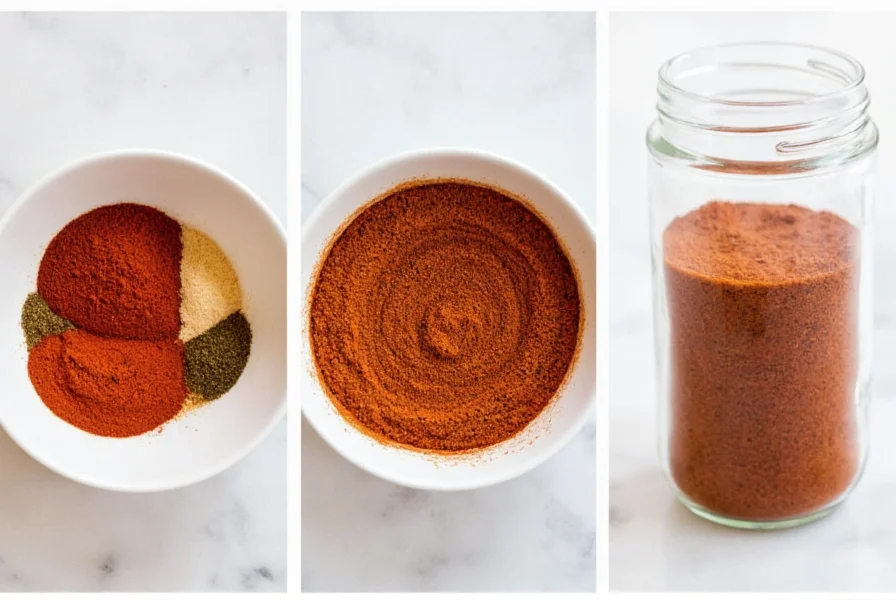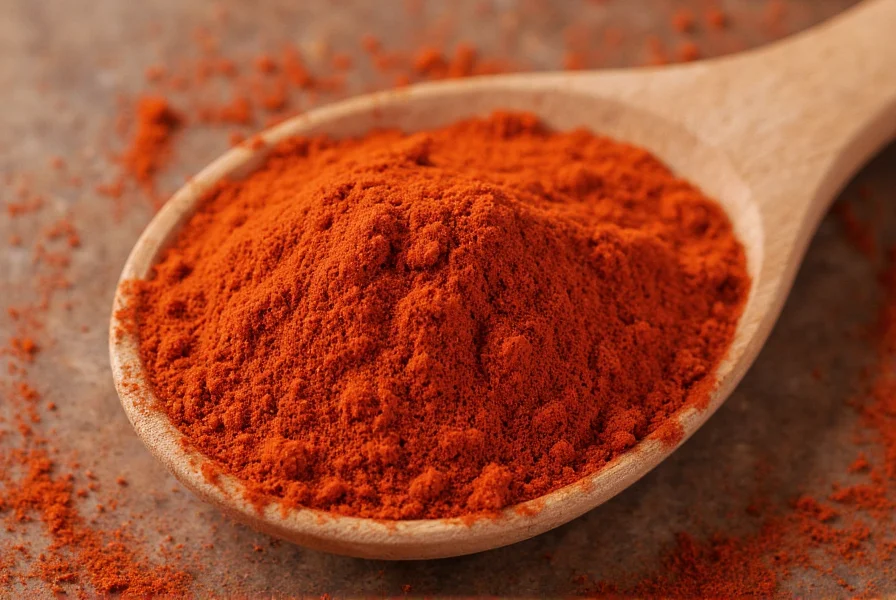When exploring what is chili spice, it's essential to distinguish it from similar terms that often cause confusion. Many people mistakenly use "chili powder" and "chili spice" interchangeably, but they represent different products with distinct culinary applications.
Chili Spice vs. Chili Powder: Clearing the Confusion
The primary difference lies in composition. Chili powder typically refers to a single-ingredient product made from dried, ground chili peppers. In contrast, chili spice (also called chili seasoning) is a prepared blend that includes chili powder plus additional spices.
| Product Type | Primary Ingredients | Typical Use |
|---|---|---|
| Chili Powder | Ground dried chili peppers only | Adding pure chili heat to dishes |
| Chili Spice/Seasoning | Chili powder + cumin, garlic, oregano, paprika | Creating complete flavor profiles for chili, tacos, etc. |
| Chili Peppers (fresh) | Whole fresh peppers | Direct cooking, salsas, roasting |
Standard Ingredients in Commercial Chili Spice Blends
While recipes vary by brand and region, most chili spice blends contain these core components:
- Chili powder (25-40%) - Provides the foundational heat and color
- Ground cumin (20-30%) - Adds earthy, warm notes
- Garlic powder (10-15%) - Contributes savory depth
- Onion powder (5-10%) - Enhances overall flavor complexity
- Dried oregano (5-10%) - Offers herbal notes
- Paprika (5-10%) - Boosts color and mild sweetness
- Salt (5-15%) - Balances and enhances other flavors
- Cayenne pepper (variable) - Adjusts heat level

Flavor Profile and Heat Characteristics
Understanding what gives chili spice its distinctive flavor requires examining its sensory properties. Most commercial blends register between 1,500-3,000 on the Scoville scale, placing them in the mild to medium heat range. The flavor profile typically features:
- Initial taste: Earthy warmth from cumin
- Middle notes: Savory garlic and onion elements
- Finish: Gradual chili heat that builds but rarely overwhelms
Regional variations exist - Texas-style blends emphasize pure chili heat with minimal additional spices, while New Mexico versions incorporate more garlic and cumin. Commercial blends often include sugar or citric acid as preservatives, which can subtly alter the flavor profile.
Practical Culinary Applications
Knowing how to use chili spice in cooking properly can transform your dishes. This versatile blend works exceptionally well in:
- Chili con carne - The signature application (3-4 tablespoons per pound of meat)
- Taco seasoning - Combine with additional cumin for authentic flavor
- Bean dishes - Adds depth to refried beans or black bean soup
- Marinades - Mix with oil and lime juice for meats
- Roasted vegetables - Toss with sweet potatoes or cauliflower
For best results, bloom the spices by toasting them in oil for 1-2 minutes before adding liquids. This technique releases essential oils and intensifies flavor without making the spices bitter.
Creating Your Own Custom Chili Spice Blend
When commercial chili spice ingredients don't match your preferences, making your own offers complete control. Here's a basic recipe that yields approximately 1 cup:
- ¼ cup ancho chili powder (mild heat, fruity notes)
- 3 tablespoons ground cumin
- 2 tablespoons garlic powder
- 1½ tablespoons onion powder
- 1 tablespoon dried oregano (Mexican preferred)
- 1½ teaspoons paprika
- 1 teaspoon cayenne pepper (adjust to heat preference)
- 1½ teaspoons salt
- ½ teaspoon black pepper

Mix all ingredients thoroughly in a bowl, then store in an airtight container away from light and heat. Properly stored, homemade chili spice maintains peak flavor for 4-6 months. For personalized variations:
- Milder version: Replace cayenne with additional paprika
- Smokier profile: Substitute chipotle powder for 1 tablespoon of ancho
- Sweeter blend: Add ½ teaspoon cocoa powder
- Restaurant-style: Increase cumin to ¼ cup and add 1 teaspoon coriander
Substitutions When You're Out of Chili Spice
If you're wondering what to use instead of chili spice, several alternatives work depending on your needs:
- For chili recipes: Combine equal parts chili powder, cumin, and garlic powder
- For taco seasoning: Use 2 parts chili powder, 1 part cumin, ½ part garlic powder
- Quick substitute: 1 tablespoon chili powder + ½ teaspoon each cumin and garlic powder
- For heat without complexity: Pure chili powder with added cayenne
Remember that chili seasoning vs chili powder means substitutions won't be perfect, but these combinations approximate the flavor profile when you need a solution immediately.
Storage and Shelf Life Considerations
To maintain optimal flavor in your chili spice blend, proper storage is essential. Store in a cool, dark place in an airtight container. Glass jars with tight-sealing lids work better than plastic containers, which can retain odors. Avoid storing near heat sources like stoves or ovens.
Commercial blends typically remain flavorful for 18-24 months, while homemade versions peak at 4-6 months. Signs your spice blend has degraded include:
- Faded red color (should be vibrant)
- Weak aroma when rubbed between fingers
- Flat, one-dimensional flavor
- Clumping (may indicate moisture exposure)
For extended freshness, consider storing smaller quantities in the freezer, which can preserve potency for up to a year beyond typical shelf life.
Frequently Asked Questions
Is chili spice the same as chili powder?
No, they're different products. Chili powder is made from ground dried chili peppers only, while chili spice (or chili seasoning) is a blend that includes chili powder plus additional spices like cumin, garlic powder, and oregano. The seasoning blend creates a more complex flavor profile suitable for dishes like chili con carne.
Can I substitute paprika for chili spice?
Paprika alone won't adequately substitute for chili spice, as it lacks the cumin, garlic, and other components. For better results, combine 1 tablespoon paprika with 1½ teaspoons cumin, 1 teaspoon garlic powder, and ½ teaspoon oregano to approximate chili spice flavor in a pinch.
How hot is typical chili spice blend?
Most commercial chili spice blends register between 1,500-3,000 on the Scoville scale, placing them in the mild to medium heat range. This is significantly milder than pure cayenne pepper (30,000-50,000 SHU) but hotter than sweet paprika (0-500 SHU). The heat builds gradually rather than hitting immediately.
What's the difference between chili seasoning and taco seasoning?
Chili seasoning typically contains more chili powder and less cumin than taco seasoning. Taco blends often include additional ingredients like coriander and sometimes sugar. For chili con carne, use chili seasoning; for tacos, use taco seasoning. They're similar but optimized for different dishes.
Does chili spice contain actual chili peppers?
Yes, authentic chili spice blends contain ground chili peppers as the primary ingredient, typically making up 25-40% of the blend. Common varieties include ancho, guajillo, and New Mexico chilies. The specific pepper blend determines the heat level and flavor nuances of the final seasoning.











 浙公网安备
33010002000092号
浙公网安备
33010002000092号 浙B2-20120091-4
浙B2-20120091-4